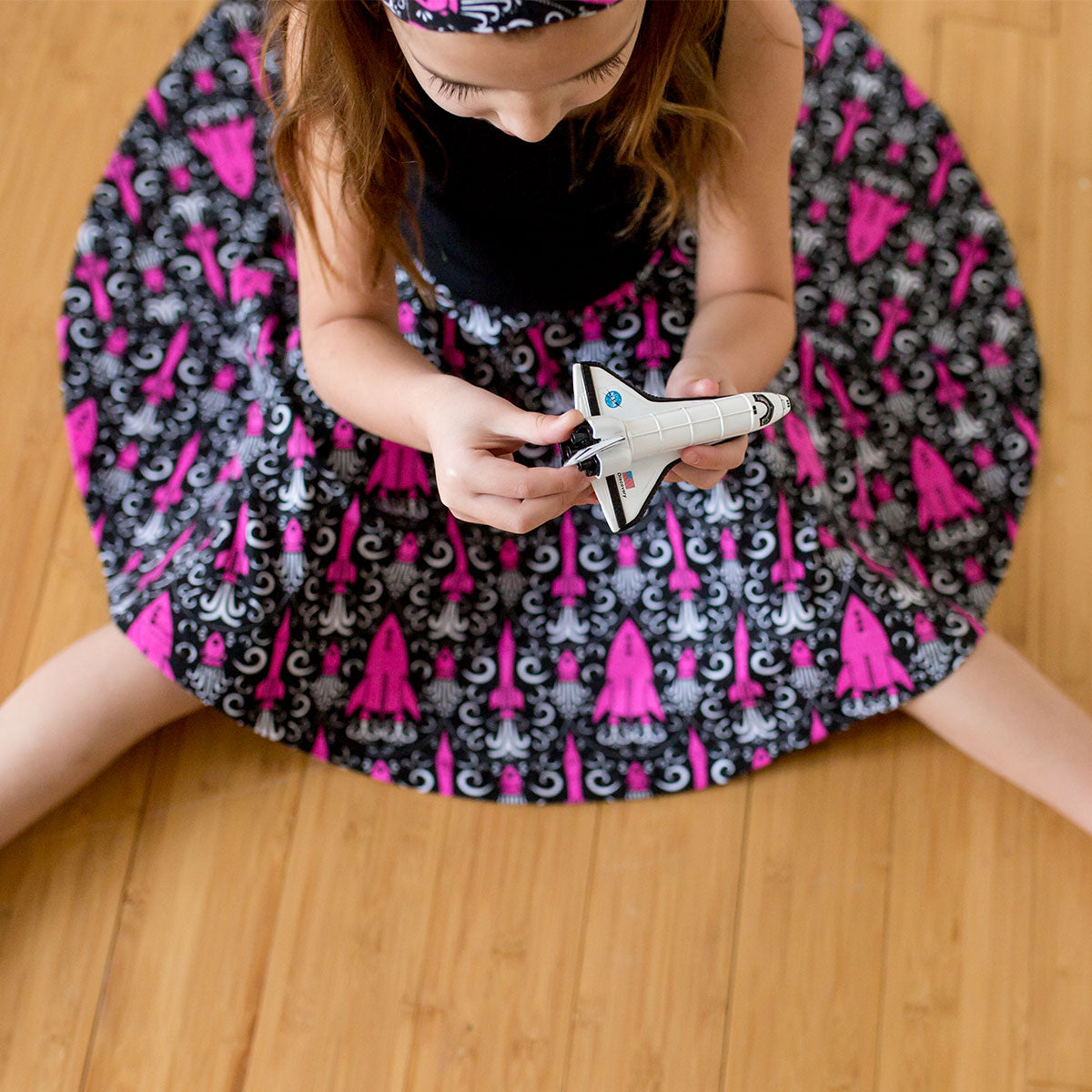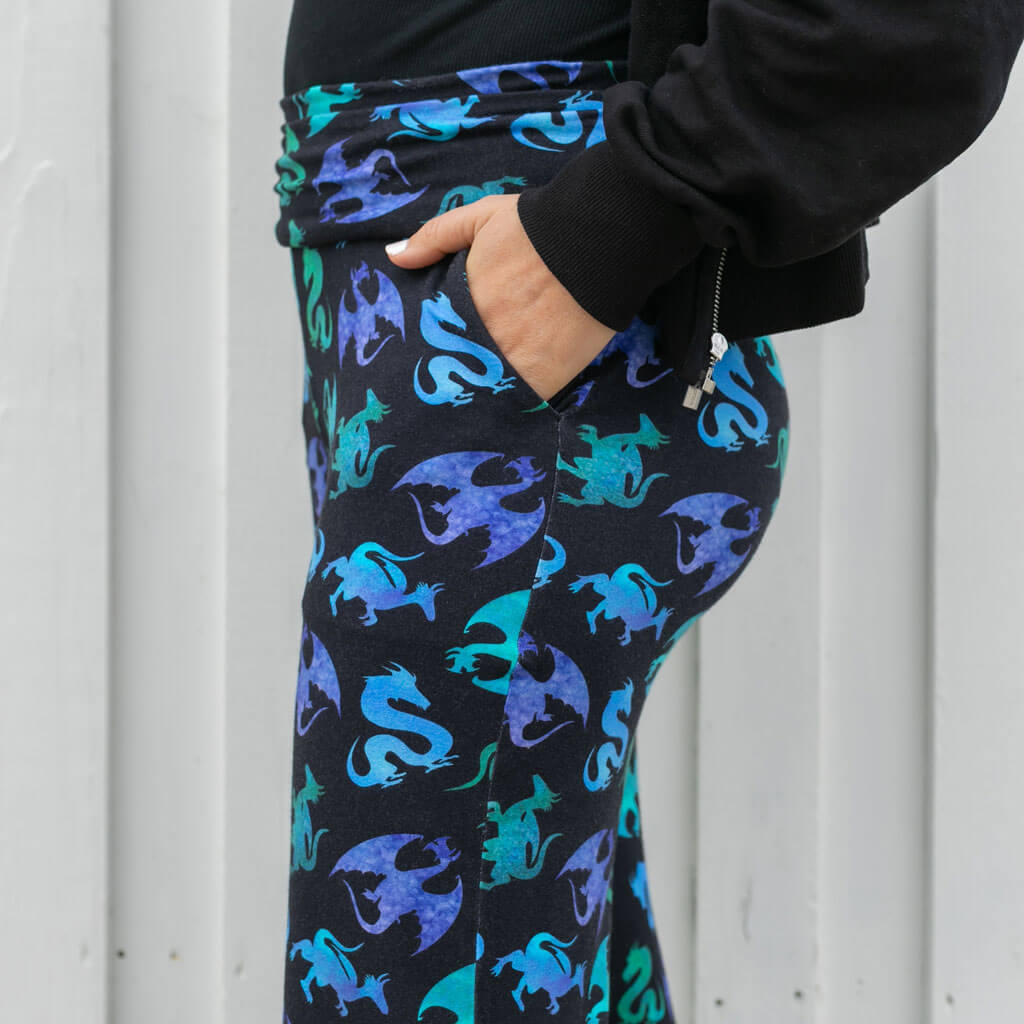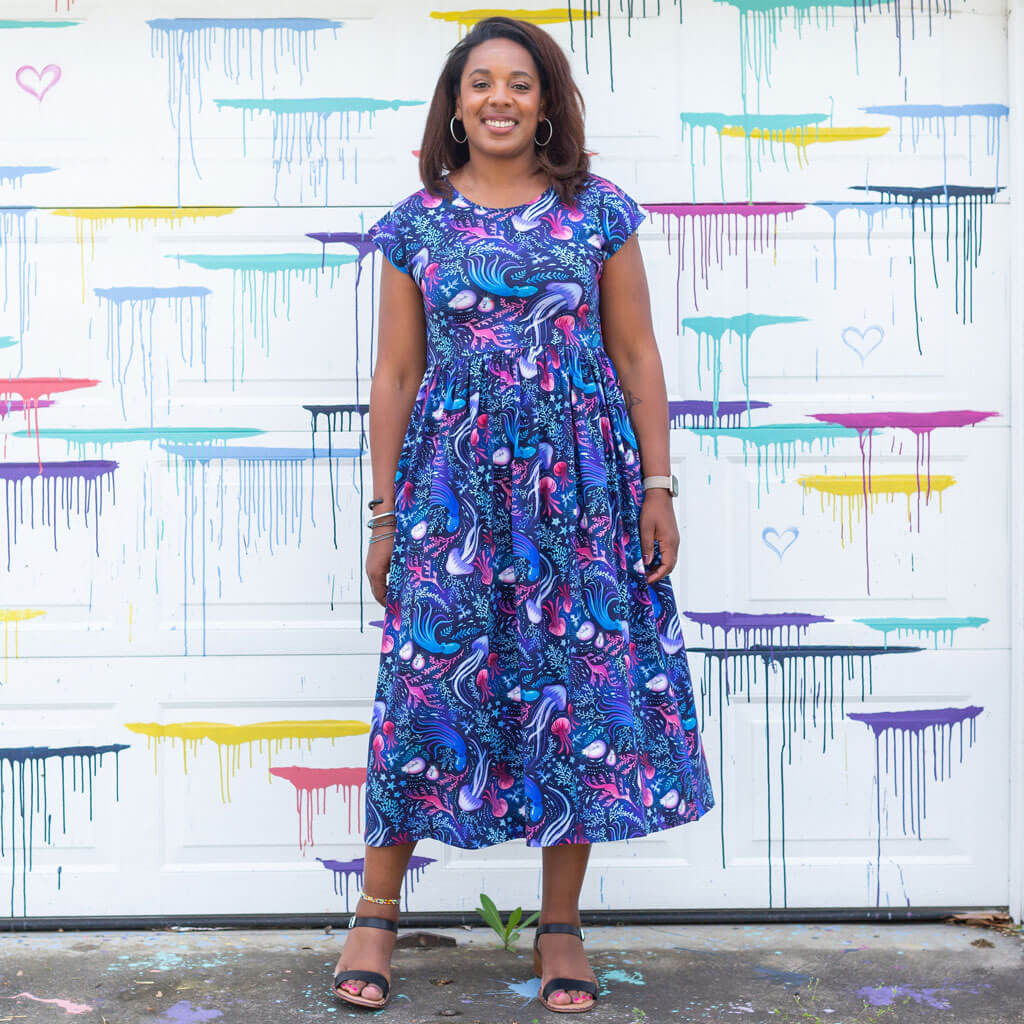Shop Now
New
Sale

How to Dress Your Daughter Like a Feminist
June 09, 2016 4 min read 7 Comments
If you are raising your daughter to be an independent, confident woman, chances are you’ve given thought to the clothes she wears - how to reconcile your feminist values with what stores are offering, much of which promotes a traditional view of girlhood. It makes helping girls learn to dress themselves a tricky and often daunting undertaking.
On top of what we want our daughters to wear, there’s the equally important consideration of what they want to wear. Before my daughter was born, I swore I would never buy her anything pink. My daughter’s favorite color now? Pink. A friend of mine was excited to have a girl to dress up in twirly dresses and lacy headbands. At age 2, her daughter is already completely uninterested in anything remotely “girly.”
So how do you clothe a budding feminist? Start with these five principles.
1. Show her options

Your daughter should know that there’s no wrong way to dress “like a girl.” If a girl is wearing something, it’s “for girls,” whatever the signs in the department store might say. Show her everything from frilly pink tutus to blue denim overalls, twirly blue cars dresses to soft purple cargo shorts.
And make sure you know what options are available. There are small businesses out there creating awesome clothes that fill the gaps in the mainstream marketplace.
2. Make sure her options reflect her interests


Like adults, most children express themselves through their clothes; they’re just a lot more literal about it than adults are. Children who love dinosaurs like to wear clothes with dinosaurs on them. Seek out the kind of clothes that your daughter likes to wear that also showcase what she’s interested in. Sometimes it can be really hard to find that perfect match, so filling her closet with options that enable her to express the full range of her interests is going to involve looking beyond mainstream shops.
Finding clothes that she wants to wear that also express her interests is important not just to encourage her in those subjects, but also to enable her to communicate them to others in her life. Adults realize that children wear clothes that reflect their interests, which is why they usually ask children about the images on their clothes. A girl who loves science and is wearing a dress with atoms on it is likely to have an adult talk to her about science - something that might not happen in another outfit. And both she and the adult benefit from the conversation sparked by that clothing option.
3. Honor her choices


You can’t give a child a choice and then tell her she’s made the wrong one - that’s what society tells women constantly. So if she prefers jeans and polo shirts - that’s great. Skirts and sparkly tights? Also great. She can do math and read books, dance and climb in either of those outfits. Even though it might not be what you envisioned for your girl, one style isn’t better or more feminist than another.
But what do you do when her choices just don’t work for the situation? Talk to her. When she wants to wear a floor-length dress to the playground or her brother’s old beat-up Thomas shirt to your sister’s black-tie wedding - that’s when you explain that clothes have to be appropriate for the occasion. Then get creative! Maybe you can throw biker shorts under the dress and tie it up on the side ‘80s style. You can take the Thomas shirt along as a lovey and let her wear her a suit to the wedding.
Give her choices, then tell her she’s made a great decision - whatever her style is.
4. Care about how her clothes are made.
The standard markup for clothing at retail is about 4 times what it costs to make - and that includes materials, shipping, and labor. Do some quick math - if a t-shirt from a big box store is priced at $4, that means that the profit for the company is around $3. Subtract out the cost of materials and shipping, and that big box store probably paid about $0.25 for the labor on that shirt.
Of course, economies of scale help big box suppliers keep costs down. It’s also true that unfair labor practices is also often a factor that allows some companies to keep prices low. Women, and sometimes even young children, working in sweatshop conditions are often part of the reason for the ultra-low prices many stores can offer.
Realistically, it is probably impossible to ensure that every article of your child’s clothing is produced ethically. But what you can do is spend a little when you can to support companies that are manufacturing ethically here in the US and abroad. That way, you’ll help support the production of clothing that is good for both your little feminist and for women in other parts of the world as well.
5. Let the washing machine and stain remover do their jobs.

An independent, creative child needs the opportunity to get her hands dirty - literally. Let her explore her world in a hands-on way: digging in the sandbox, finger-painting, fishing, cooking, rolling down hills. If her oily hands reach for her hem instead of her napkin a few times, such is life. At the end of the day, model for her that it’s what she does in her clothes that really matters, not whether or not she keeps them clean all day. To that end, find some good stain remover and a decent washing machine and let those do the work of keeping clothes clean while your girl freely does the work of childhood in clothes she loves.
While researching this piece, I read some superb articles about how to dress like a feminist. Be sure to check out these articles by Caroline Criado-Perez, Virgina Sole-Smith, Elisabeth Eigerman, and Robin Reetz.

7 Responses
Amber Kerr
July 20, 2016
Nice blog post, and I agree with almost all of it. Of course it’s impossible to cover all the subtleties of this topic in a short post, and I’d like to add a thought. I think there are some clothing choices that are pretty much always a bad idea because they reflect unhealthy elements of our society’s expectations for women and girls:
1) Uncomfortable, restrictive clothing that girls are expected to put up with because it is pretty. Example: “Sparkly princess” shoes that are rigid, chafing, ill-fitting, and dangerously slippery. (These always entrance my 3-year-old when we go shoe shopping, and I always have to tell her no.)
2) Overly sexualized clothing and accessories for young girls. Examples: Makeup kits marketed at toddlers. Bikinis for preschoolers. Size 2T shirts saying “I’m Just a Cupcake Looking For My Stud Muffin.” “Sexy cat” Halloween costumes for elementary-aged girls. It’s natural that girls want to emulate their mommies and other grown-up women that they see, but there has to be some line drawn between childhood and adulthood. Kids grow up too fast as it is. :-(
Those are my two cents. Thanks, Princess Awesome, for being a rare bright spot in the thoroughly depressing realm of children’s clothing! (Don’t even get me started on how miserable boys’ clothing is…)
Mandi
July 20, 2016
I personally love this message. I hate the notion that modern day feminists have made that you cannot be both a princess/housewife/SAHM etc AND a feminist. Women need to remember that feminism at it’s core is about a woman’s right to choose what she wants to do, and in this case how she wants to dress. And if she chooses a closet that is 100% frilly pink sparkly dresses, that is not wrong. If she never is interested in rolling a car down a track, that’s okay. And if she does, great! This artcile sums it up beautifully – it’s about letting her know that she has the option to have, do, say, whatever she personally chooses (within child sized limits of course).
Kelly
July 20, 2016
Like the article, but might add in something in #1 about there being no wrong way to dress like a girl or like a boy…or about respecting other people’s choices for #3!
Carol Stein
June 30, 2016
How is promoting being a princess, feminist? Also, the best thing you can give any girl wearing a dress is a good pair of bike shorts!
Amber Sesnick
June 25, 2016
I really appreciate what you guys are doing and the message you are trying to get across. My only big complaint is that while you are promoting the feminist ideals of your clothing, you are still not making them as accessible as little boys clothing. I would love to see pockets on your dresses. Little girls should be able to stick small toys in their pockets or cool rocks and sticks they find while playing. The lack of pockets, and the existence of fake pockets, in girls and women’s clothing irritates me to no end. As a grown woman I should be able to carry my phone and keys with me without strapping on a purse and my daughter should be able to play effectively in her clothes just like the boys. Thanks for what you are doing. Do what you will with my comments.
Darsha
June 18, 2016
The links at the end of the article don’t work. Otherwise, mostly a reflection of my own personal conflict…
Leave a comment
Comments will be approved before showing up.
Subscribe
Sign up to get the latest on sales, new releases and more …







kate
July 30, 2016
While dino dresses are amazing and my 3 year old would love one, she’s had 3 years worth of a mostly gender neutral wardrobe with a mix of practical tees, tanks, sweaters, shorts, pants and shoes…all from 2nd hand shops & goodwill & friends that might equal the cost of that princess awesome dress.